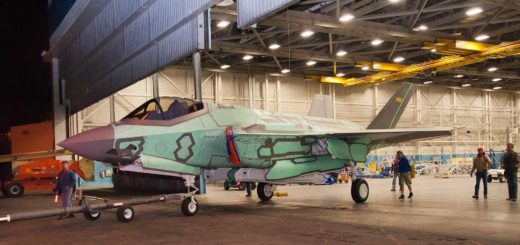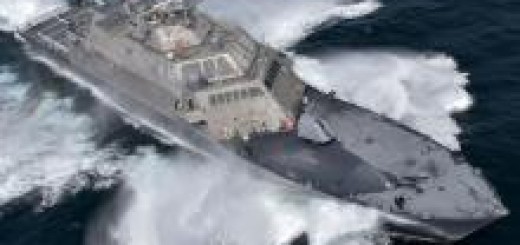U.S. MQ-9 Reaper Drone Japan Taxiway Takeoff Expands Deployment Options
{loadposition bannertop}
{loadposition sidebarpub}
An MQ-9 Reaper from the 319th Expeditionary Reconnaissance Squadron has completed a launch and recovery sequence from a shortened taxiway at Kadena Air Base, Japan, as part of Project Lima BEAN. The October sortie, described in a 24 November 2025 release by the 18th Wing, pushes Agile Combat Employment forward in the Indo-Pacific by proving that U.S. unmanned airpower can operate from constrained and potentially damaged airfields.
The U.S. Air Force has taken a step toward dispersed unmanned operations in the Western Pacific, using a taxiway at Kadena rather than a full-length runway to launch and recover an MQ-9 Reaper under Pacific Air Forces. In the 8 October trial, flown by the 319th Expeditionary Reconnaissance Squadron under Project Lima BEAN, local crews at Kadena handled takeoff and landing on taxiway Lima before passing the aircraft via satellite link to a crew in the continental United States for the main mission profile. The event, detailed by 18th Wing Public Affairs in a 24 November 2025 release, fits into a broader Air Force push to align the MQ-9 with Agile Combat Employment concepts that already emphasize smaller footprints and austere locations for the Reaper in other theaters.Follow Army Recognition on Google News at this link
A U.S. Air Force MQ-9 Reaper, assigned to the 319th Expeditionary Reconnaissance Squadron, takes off from taxiway Lima at Kadena Air Base, Japan, on Oct. 9, 2025, during Project Lima BEAN (Picture source: US DoD)
The MQ-9 Reaper is an aircraft of the Medium Altitude Long Endurance (MALE) category that is usually dependent on long prepared runways to conduct takeoff and landing. Designed by General Atomics Aeronautical Systems, it has a wingspan of around 20 meters and uses a Honeywell TPE331-10 turboprop engine of roughly 900 horsepower, which allows it to remain airborne for more than 24 hours at altitudes close to 15,000 meters. Its payload combines the AN/DAS-1 Multi Spectral Targeting System (MTS-B) with electro-optical and infrared sensors, a laser designator, and a video downlink, while a Ku band satellite data link enables command and mission control over very long distances.
Instead of using a full-length runway, the 319th Expeditionary Reconnaissance Squadron operates a shortened taxiway, Taxiway Lima, for both takeoff and recovery. This configuration brings the test closer to the conditions encountered on dispersal sites or damaged infrastructure. First Lieutenant Wesley Fulford, an MQ-9 pilot within the 319th ERS, notes that the squadron deliberately applies “nonstandard procedures in the effort of building standard procedures,” which indicates controlled experimentation within a defined framework. The test is part of the Agile Combat Employment (ACE) concept, which leads the US Air Force to distribute its assets across a network of main operating bases, forward locations, and temporary sites rather than concentrating the fleet on a limited number of major platforms. For a system such as the MQ-9, demonstrating that it can operate from a shortened surface increases the number of potential operating points along the island chains and reduces the logistical footprint of a forward presence in the region.
At the tactical and operational level, the way the mission unfolds shows in practical terms what changes when takeoff and landing no longer require a conventional runway. Local teams at Kadena handle the most demanding phases on the shortened taxiway, from taxi to initial climb, before transferring control via satellite link to a crew based in the continental United States. This arrangement shows that an MQ-9 can be employed from a reduced surface held by a small forward team while relying on a remote cell for long-duration mission conduct.
A Reaper fitted with electro-optical sensors and a mixed load of AGM-114 Hellfire missiles and GBU-12 or GBU-38 guided bombs can thus provide persistent intelligence, surveillance, and reconnaissance (ISR) and responsive strike capability from locations that an adversary would not automatically identify as air bases. The use of taxiways or short prepared strips spreads potential launch points, complicates adversary targeting plans, and, when detachments apply strict Emission Control (EMCON) rules, reduces the detection window before takeoff. In a contested electromagnetic environment, this combination of mobility, endurance, and controlled connectivity increases the likelihood of keeping an MQ-9 detachment available even after initial strikes on main runways.
For the 18th Wing, Project Lima BEAN primarily serves to redefine modes of operation around the MQ-9 within an Agile Combat Employment (ACE) framework. The unit learns how to operate the drone with small teams, how to organize refuelling, turnarounds, and force protection around short surfaces that may be distant from the heavy infrastructure of the main base. Procedures for taxi, securing the taxiway, coordinating with ground-based air defense and sequencing control transfers between forward crews and remote crews are rewritten to be able to shift, within a few hours, the starting point of an ISR alert or a strike mission. In practice, this approach opens the way for MQ-9 detachments able to land on an austere site, refuel and rearm with minimal support, then take off again toward another area, which gives commanders a wider set of graduated options and makes the US posture less dependent on a few runways that are easy to neutralize.
The trial conducted at Kadena forms part of an ongoing response to growing anti-access and area denial (A2/AD) capabilities in East Asia. China’s expanding arsenal of ballistic and cruise missiles is intended to hold large air bases at risk from the earliest phases of a conflict. Showing that key platforms such as the MQ-9 can continue to operate from shortened or improvised surfaces complicates this calculation by multiplying possible launch points across the region. The test sends a signal to allies, underlining that US airpower is not tied exclusively to a few vulnerable hubs, and to competitors, indicating that the United States intends to adapt its posture in order to maintain presence, deterrence, and freedom of action in the Indo-Pacific even under sustained pressure.

{loadposition bannertop}
{loadposition sidebarpub}
An MQ-9 Reaper from the 319th Expeditionary Reconnaissance Squadron has completed a launch and recovery sequence from a shortened taxiway at Kadena Air Base, Japan, as part of Project Lima BEAN. The October sortie, described in a 24 November 2025 release by the 18th Wing, pushes Agile Combat Employment forward in the Indo-Pacific by proving that U.S. unmanned airpower can operate from constrained and potentially damaged airfields.
The U.S. Air Force has taken a step toward dispersed unmanned operations in the Western Pacific, using a taxiway at Kadena rather than a full-length runway to launch and recover an MQ-9 Reaper under Pacific Air Forces. In the 8 October trial, flown by the 319th Expeditionary Reconnaissance Squadron under Project Lima BEAN, local crews at Kadena handled takeoff and landing on taxiway Lima before passing the aircraft via satellite link to a crew in the continental United States for the main mission profile. The event, detailed by 18th Wing Public Affairs in a 24 November 2025 release, fits into a broader Air Force push to align the MQ-9 with Agile Combat Employment concepts that already emphasize smaller footprints and austere locations for the Reaper in other theaters.
Follow Army Recognition on Google News at this link
A U.S. Air Force MQ-9 Reaper, assigned to the 319th Expeditionary Reconnaissance Squadron, takes off from taxiway Lima at Kadena Air Base, Japan, on Oct. 9, 2025, during Project Lima BEAN (Picture source: US DoD)
The MQ-9 Reaper is an aircraft of the Medium Altitude Long Endurance (MALE) category that is usually dependent on long prepared runways to conduct takeoff and landing. Designed by General Atomics Aeronautical Systems, it has a wingspan of around 20 meters and uses a Honeywell TPE331-10 turboprop engine of roughly 900 horsepower, which allows it to remain airborne for more than 24 hours at altitudes close to 15,000 meters. Its payload combines the AN/DAS-1 Multi Spectral Targeting System (MTS-B) with electro-optical and infrared sensors, a laser designator, and a video downlink, while a Ku band satellite data link enables command and mission control over very long distances.
Instead of using a full-length runway, the 319th Expeditionary Reconnaissance Squadron operates a shortened taxiway, Taxiway Lima, for both takeoff and recovery. This configuration brings the test closer to the conditions encountered on dispersal sites or damaged infrastructure. First Lieutenant Wesley Fulford, an MQ-9 pilot within the 319th ERS, notes that the squadron deliberately applies “nonstandard procedures in the effort of building standard procedures,” which indicates controlled experimentation within a defined framework. The test is part of the Agile Combat Employment (ACE) concept, which leads the US Air Force to distribute its assets across a network of main operating bases, forward locations, and temporary sites rather than concentrating the fleet on a limited number of major platforms. For a system such as the MQ-9, demonstrating that it can operate from a shortened surface increases the number of potential operating points along the island chains and reduces the logistical footprint of a forward presence in the region.
At the tactical and operational level, the way the mission unfolds shows in practical terms what changes when takeoff and landing no longer require a conventional runway. Local teams at Kadena handle the most demanding phases on the shortened taxiway, from taxi to initial climb, before transferring control via satellite link to a crew based in the continental United States. This arrangement shows that an MQ-9 can be employed from a reduced surface held by a small forward team while relying on a remote cell for long-duration mission conduct.
A Reaper fitted with electro-optical sensors and a mixed load of AGM-114 Hellfire missiles and GBU-12 or GBU-38 guided bombs can thus provide persistent intelligence, surveillance, and reconnaissance (ISR) and responsive strike capability from locations that an adversary would not automatically identify as air bases. The use of taxiways or short prepared strips spreads potential launch points, complicates adversary targeting plans, and, when detachments apply strict Emission Control (EMCON) rules, reduces the detection window before takeoff. In a contested electromagnetic environment, this combination of mobility, endurance, and controlled connectivity increases the likelihood of keeping an MQ-9 detachment available even after initial strikes on main runways.
For the 18th Wing, Project Lima BEAN primarily serves to redefine modes of operation around the MQ-9 within an Agile Combat Employment (ACE) framework. The unit learns how to operate the drone with small teams, how to organize refuelling, turnarounds, and force protection around short surfaces that may be distant from the heavy infrastructure of the main base. Procedures for taxi, securing the taxiway, coordinating with ground-based air defense and sequencing control transfers between forward crews and remote crews are rewritten to be able to shift, within a few hours, the starting point of an ISR alert or a strike mission. In practice, this approach opens the way for MQ-9 detachments able to land on an austere site, refuel and rearm with minimal support, then take off again toward another area, which gives commanders a wider set of graduated options and makes the US posture less dependent on a few runways that are easy to neutralize.
The trial conducted at Kadena forms part of an ongoing response to growing anti-access and area denial (A2/AD) capabilities in East Asia. China’s expanding arsenal of ballistic and cruise missiles is intended to hold large air bases at risk from the earliest phases of a conflict. Showing that key platforms such as the MQ-9 can continue to operate from shortened or improvised surfaces complicates this calculation by multiplying possible launch points across the region. The test sends a signal to allies, underlining that US airpower is not tied exclusively to a few vulnerable hubs, and to competitors, indicating that the United States intends to adapt its posture in order to maintain presence, deterrence, and freedom of action in the Indo-Pacific even under sustained pressure.








